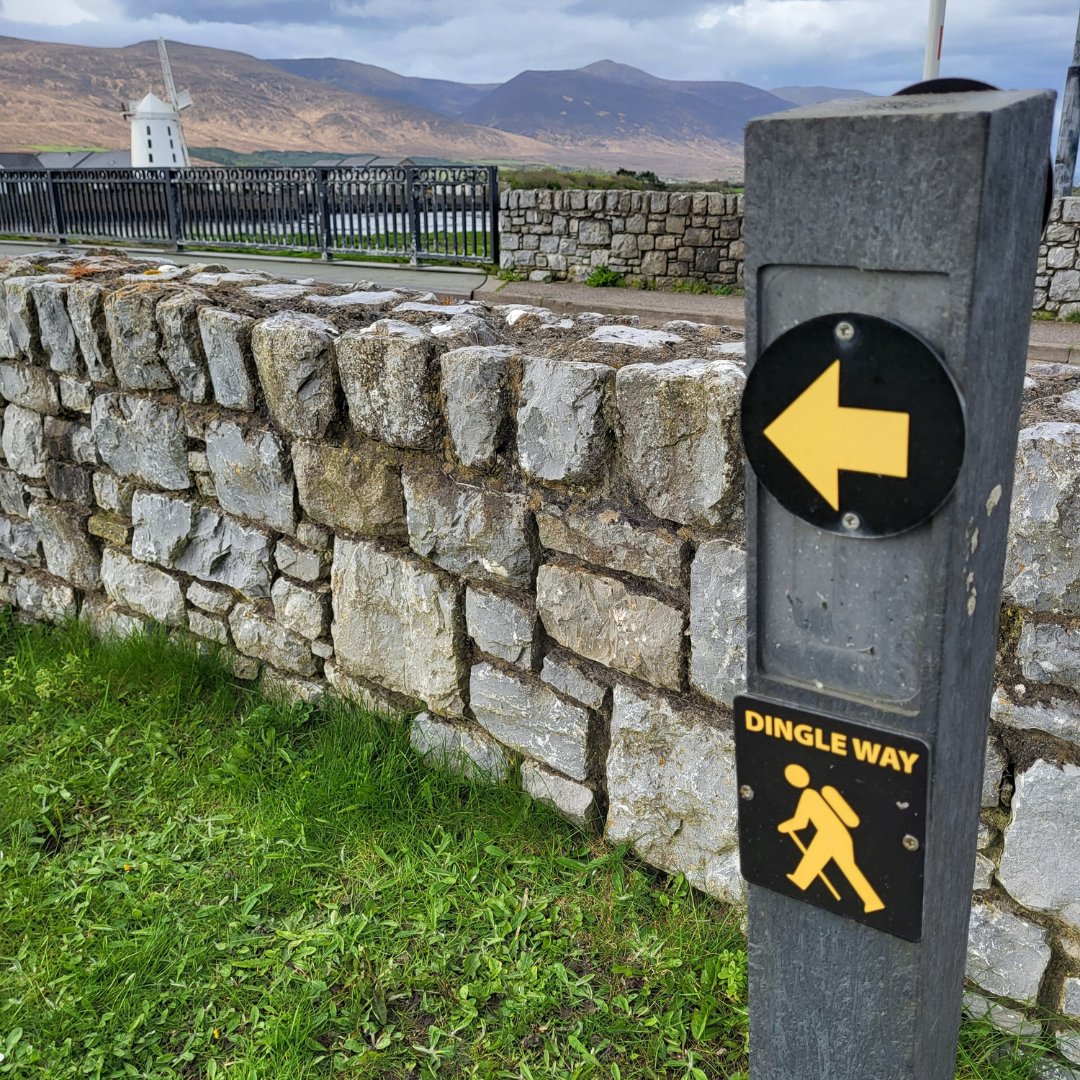
Route Overview
Where is the Dingle Way?
The Dingle Way, located in the southwest of Ireland, is a prominent trail among over 40 national way-marked trails in the country. Widely regarded as Ireland’s most popular hiking trail, it spans a remarkable 179km (112 miles) and showcases the captivating beauty of the Dingle Peninsula in Co. Kerry. Starting and ending in the charming town of Tralee, this trail takes adventurers on an enchanting journey through the picturesque landscapes and surroundings of the region.
Why should you walk the Dingle Way?
If the National Geographic Traveller magazine has hailed it as “the most beautiful place on Earth,” do you really need any more convincing? The Dingle Way unveils an extraordinary Irish landscape, adorned with wild coastlines, golden beaches, and rugged terrain. This captivating trail not only allows you to immerse yourself in enchanting coastal and mountain scenery but also offers a glimpse into the rich tapestry of local Irish history.
The charm of the Dingle Way lies in its diverse landscapes, which constantly never ceases to surprise and inspire. Every twist and turn of the path reveals a dramatic change of scenery, from traversing the foothills of Slieve Mish to crossing the shoulder of Mount Brandon, from the crashing waves of the Atlantic Ocean at Slea Head to the serene beauty of pastoral farmland and sandy beaches around Castlegregory. Each step along the Dingle Way invigorates the senses and leaves an indelible mark on the soul.
For history and culture enthusiasts, the Dingle Way is a treasure trove of archaeological wonders. Along the trail, you’ll encounter remarkable sights such as standing stones, ogham stones, and a multitude of beehive huts, each whispering stories of ancient times. Moreover, the towns of Tralee and Dingle (An Daingean) serve as vibrant cultural hubs, where you can readily immerse yourself in traditional Irish music and experience the lively atmosphere known as the “craic.”

When is the best time to walk the Dingle Way?
When booking a hiking holiday, every season has its own charm, but indeed some months are better for hiking than others. It is always important to make yourself aware of the best times to walk any long-distance trails as weather conditions and busyness can greatly impact your overall hiking experience.
Of course, hours of sunshine, probability of rain, wind and temperature depend solely on the respective season in Ireland.
The Dingle Way is commonly referred to as the most beautiful long distance walking trail in Ireland. Due to the longer daylight hours and more favourable weather conditions we recommend that you visit the Dingle Way anytime from March through to October. If you are thinking of completing the Irish trail during the other months of the year, there is a high possibility you will be met with adverse weather conditions including ice, snow, or storms, along with shorter days of daylight.
As a result of the prevailing southwesterly winds along with the warmth provided by the Gulf Stream along the west coast, Dingle’s climate is mostly mild. If it is sunshine you are looking for, then July and August are the months for you as temperatures range between 14-16C (57-61F). The coldest months in Dingle are January and February with average temperatures ranging from 4-7C (39-45F).
Due to it’s popularity, it is advised that you book your hiking holiday early on the Dingle Way to avoid any disappointment. It is also important to note that the months of July and August are commonly regarded as the the high season too due to Irish family holidays.
How long does it take to walk the Dingle Way?
The 179km long Dingle Way usually takes the average adult with reasonable fitness approximately 8 to 9 days to cover the entire long distance Irish walking trail while soaking up your surroundings.
At Hillwalk Tours, we offer gentle and moderate tour grading levels depending on the balance of physical challenge and comfort level that you require. Within these levels, you can choose between 4 to 12-day hiking tours to complete the trail. All you have to decide is how many kilometres / miles you would like to walk per day and we take care of the rest!
Tour Route
Types of Trails
Choosing the right hiking tour for you can be, at times, tricky. It is always important to consider your own physical capability and comfort levels.
For example, at Hillwalk Tours, we have grouped each trail route we offer into three categories depending on personal preference and fitness levels. These are – gentle, moderate, and challenging. Each of these categories, depending on the destination, will include anything from 4 to 13-day itineraries, with customers given the option to add rest days where they see fit.
Our gentle hikes are perfectly suited for those who would consider themselves as a part-time hiker who enjoys taking photos and meeting locals while taking in the spectacular scenery. Our moderate hikes will suit people who are used to regular exercise and appreciate the opportunity of covering plenty of ground each day without going beyond their limits. Finally, our challenging hikes are for hikers who look to set off early in the morning and not stop until they have reached their destination.
With regards to our Dingle Way trail, we offer both gentle and moderate hikes. Each of these hiking categories cover the following average hiking distance and time each day:
Gentle: 16-18km or 10-11 miles and between 4-6 hours per day
Moderate: 20-23km or 12-14 miles and between 5-7 hours per day
Hillwalk Tours Guide Notes
As the Dingle Way is such a popular trail in Ireland, walkers are will be able to find off-the-shelf guidebooks such as the Rucksack Readers guidebook, before setting off on the trail.
If you decide to walk the trail with Hillwalk Tours, you will receive a detailed walking pack once you have fully booked your hiking holiday. This walking pack will include detailed Ordnance Survey (OS) maps and unique route notes and walking directions written and constantly updated by our route development team. By personally walking each trail and creating our own detailed route notes, it allows us to provide more itineraries, route options and alternatives than what you will typically find across generic guidebooks. It also includes GPS tracks meaning you will never have to worry about getting lost.
Starting and Finishing Point
Traditionally, embarking on the Dingle Way entails a clockwise route, commencing from the vibrant town of Tralee and venturing along the northern slopes of the majestic Slieve Mish Mountains. Along the way, you’ll meander through the charming village of Camp, where the trail branches southward, leading you across the peninsula towards the renowned Inch Beach. Continuing your expedition, you’ll pass through the historic village of Annascaul, home to the legendary South Pole Inn, once owned by the esteemed Antarctic explorer, Tom Crean. And then, behold Dingle, the westernmost town in all of Europe, where the true magic of this journey unfolds. From here, the trail takes you around the rugged splendour of Slea Head, the westernmost point of Ireland.
As the walking trail loops back to the north, you’ll be captivated by the breathtaking landscapes of Dunquin and Ballyferriter, adding to the tapestry of picturesque scenes on the Dingle Peninsula. At this point, you’ll have the choice of either conquering the summit of Masatiompan, the highest point of the trail, or opting for a less strenuous alternative by traversing the southern shoulder of Mount Brandon, leading you into the idyllic village of Cloghane. From there, a serene and beautiful beach hike awaits, guiding you to the enchanting destination of Castlegregory, before retracing your steps back to Camp and finally returning to Tralee, completing the extraordinary Dingle Way.
Sample Dingle Way Itineraries
The following are examples of Hillwalk Tours Gentle and Moderate itineraries of hiking the Dingle Way.
Gentle 6-Day
Day 1: Arrival in Annascaul
Day 2: Annascaul – Dingle Town (20.5-22km or 13-13.5 miles)
Day 3: Ventry – Slea Head/Dunquin (11-15km or 6-9.5 miles)
Day 4: Slea Head/Dunquin – Ballyferriter (13-17km or 8-10.5 miles)
Day 5: Ballyferriter – Cuas (14-15.5km or 8.5-9.5 miles)
Day 6: Departure from Cuas
Gentle 7-Day
Day 1: Arrival in Camp
Day 2: Camp – Annascaul (17km or 10.5 miles)
Day 3: Annascaul – Dingle Town (20.5-22km or 13-13.5 miles)
Day 4: Ventry – Slea Head/Dunquin (11-15km or 6-9.5 miles)
Day 5: Slea Head/Dunquin – Ballyferriter (13-17km or 8-10.5 miles)
Day 6: Ballyferriter – Cuas (14-15.5km or 8.5-9.5 miles)
Day 7: Departure from Cuas
Gentle 8-Day
Day 1: Arrival in Dingle Town
Day 2: Ventry – Slea Head/Dunquin (11-15km or 6-9.5 miles)
Day 3: Slea Head/Dunquin – Ballyferriter (13-17km or 8-10.5 miles)
Day 4: Ballyferriter – Cuas (14-15.5km or 8.5-9.5 miles)
Day 5: Cuas – Cloghane (Northern route: 15-22km or 9.5-13.5 miles, Southern Route: 10km or 6.25 miles)
Day 6: Cloghane – Scraggane Pier (16km or 10 miles)
Day 7:Scraggane Pier – Camp (21km – 13 miles)
Day 8: Departure from Camp
Gentle 9-Day
Day 1: Arrival in Dingle Town
Day 2: Ventry – Slea Head (11-15km or 6-9.5 miles)
Day 3: Slea Head/Dunquin – Ballyferriter (13-17km or 8-10.5 miles)
Day 4: Ballyferriter – Cuas (14-15.5km or 8.5-9.5 miles)
Day 5: Cuas – Cloghane (Northern Route: 15-22km or 9.5-13.5 miles, Southern Route: 10km or 6.25 miles)
Day 6: Cloghane – Scraggane Pier (16km or 10 miles)
Day 7: Scraggane Pier – Camp (21km or 13 miles)
Day 8: Camp – Tralee (18km or 11.25 miles)
Day 9: Departure from Tralee
Moderate 10-Day
Day 1: Arrival in Tralee
Day 2: Tralee – Camp (18km or 11 miles)
Day 3: Camp – Annascaul (17km or 10.5 miles)
Day 4: Annascaul – Dingle Town (20.5-22km or 12.5-13.5 miles)
Day 5: Dingle – Dunquin (22km or 13.75 miles)
Day 6: Dunquin – Cuas (25km or 15.5 miles)
Day 7: Cuas – Cloghane (Northern Route: 15-22km or 9.5-13.5 miles, Southern Route: 10km or 6.25 miles)
Day 8: Cloghane – Castlegregory (27km or 17 miles)
Day 9: Castlegregory – Tralee (29km or 18 miles)
Day 10: Departure from Tralee
Currency and Expenses
The currency used throughout Ireland is the Euro (€).
The cost of food, drinks, and activities in Dingle can vary depending on several factors such as the type of establishment, the time of year, and personal preferences.
Eating out in restaurants in Dingle can range from affordable to moderately expensive, depending on the type of cuisine and establishment. A meal for one person in a mid-range restaurant can cost around €15 to €30, excluding drinks. If you prefer more upscale dining, the prices can go higher. The cost of drinks in Dingle, particularly in pubs, can vary. A pint of beer or a glass of wine can cost around €4 to €8, depending on the establishment. Prices may be higher in touristy areas or during peak seasons.
Dingle offers a variety of activities, including boat trips and exploring historical sites. The prices for these activities can vary. As mentioned above, it’s worth noting that prices in Dingle can be higher during the peak tourist season (June, July and August) compared to the off-peak season.
Dingle Way Accommodation and Services
Along the Dingle Way, you can find various accommodations and services to cater to hikers’ needs.
Hotels & Guesthouses
There are several hotels and guesthouses available along the Dingle Way, particularly in towns and villages such as Tralee, Dingle, Dunquin, and Annascaul. These accommodations offer comfortable rooms, dining facilities, and amenities for travellers.
Bed & Breakfasts (B&B)
B&Bs are a popular choice along the trail, providing cozy and affordable lodging options. They offer comfortable rooms, breakfast, and often have friendly hosts who can provide local information and tips for your journey.
Hostels
For budget-conscious travellers, there are hostels scattered along the route. These establishments usually provide dormitory-style accommodations and communal facilities such as kitchens and lounges.
Camping and Glamping
If you prefer camping, there are designated campsites available along the Dingle Way such as Camp and Annascaul. These sites typically provide basic amenities such as toilets, showers, and sometimes cooking facilities.
Wild camping along the Dingle Way, although not prohibited by law, requires careful consideration due to the exposed terrain, lack of shelter from strong winds and rain, muddy conditions in Spring, and the need for appropriate equipment to endure Ireland’s unpredictable weather.
Alternatively, you can experience the beauty of the Dingle Way with a touch of luxury by exploring the glamping options available along the route. From cosy bell tents nestled amidst picturesque landscapes to stylish yurts equipped with modern comforts, these glamping sites offer a unique and comfortable way to immerse yourself in the enchanting surroundings of the Dingle Peninsula.
Airbnb and Self-Catering
Airbnb accommodations offer a diverse range of options, from cosy cottages to seaside retreats, providing a unique and personalized experience for hikers. For example, some working farms along the Dingle Way offer farmhouse accommodations, providing a unique experience for visitors, allowing them to stay in rural settings and witness farm life up close.
Restaurants and Cafes
Along the trail and in towns and villages, you’ll find numerous restaurants, cafes, and pubs where you can enjoy a meal, snack, or a refreshing drink. These establishments serve both local and international cuisine, including traditional Irish dishes. Most restaurants and cafes will also be able to meet several dietary requirements.
Shops and Grocery Stores
In the towns and villages along the Dingle Way, you’ll find grocery stores and shops where you can stock up on food, water, and other supplies for your journey. It’s advisable to plan ahead and carry snacks and water while hiking between settlements.
ATM’s
There are ATMs available in towns and villages along the route, including Tralee, Dingle, Annascaul, Dunquin, and Castlegregory. It’s important to note that the availability of ATMs may be limited, especially in smaller villages or remote areas. To ensure you have enough cash for your journey, it’s advisable to plan ahead and withdraw sufficient funds in larger towns where ATMs are more readily accessible. Additionally, carrying some cash with you is recommended for places that may not accept cards or in case of any unforeseen circumstances. There is the potential to obtain cashback from certain stores. This means that when making a purchase with your card, you can request additional cash on top of your payment. However, it’s worth noting that not all stores offer this service, and the maximum amount of cashback might vary.
Dingle Way Trail Etiquette
Dingle is renowned for its stunning natural beauty and environmental conservation efforts. Many locals are passionate about preserving the region’s landscapes and marine life. Respect for the environment, such as practicing responsible tourism, following designated hiking trails, and supporting eco-friendly initiatives, is highly valued in Dingle.
Trail etiquette is highly valued along the Dingle Way, and hikers are encouraged to follow the principles of the Leave No Trace organization. It is essential to respect the natural environment by refraining from littering or leaving behind any waste, including fruit peels, wrappers, or other non-biodegradable items. Hikers are expected to carry out all their trash and dispose of it properly in designated bins or take it with them until they find appropriate disposal facilities. By practicing Leave No Trace principles, hikers contribute to preserving the pristine beauty of the trail and ensuring its enjoyment for future generations.
At Hillwalk Tours, we proudly support sustainable tourism and love the countryside as it is – wild, peaceful and clean. We are proud to support the “Leave No Trace” initiative that aims to preserve the natural beauty of each nations countryside where we offer hiking holidays.
Hillwalk Tours Dingle Way Map
The following is a map of the Dingle Way route:
Dingle Way Terrain
Waymarking
The Dingle Way is well sign-posted throughout its entirety. You will regularly see a yellow hiker throughout the trail which will indicate your every next turn, making it significantly difficult for you to get lost or take the wrong turn.
If you are ever in doubt, you can also check the Hillwalk Tours turn by turn directions and route notes including GPS coordinates. We also supply all you need to know about local information and history as you pass, along with trail alternatives and other activities.
Want to learn more about how to read a map? Check out this blog post.
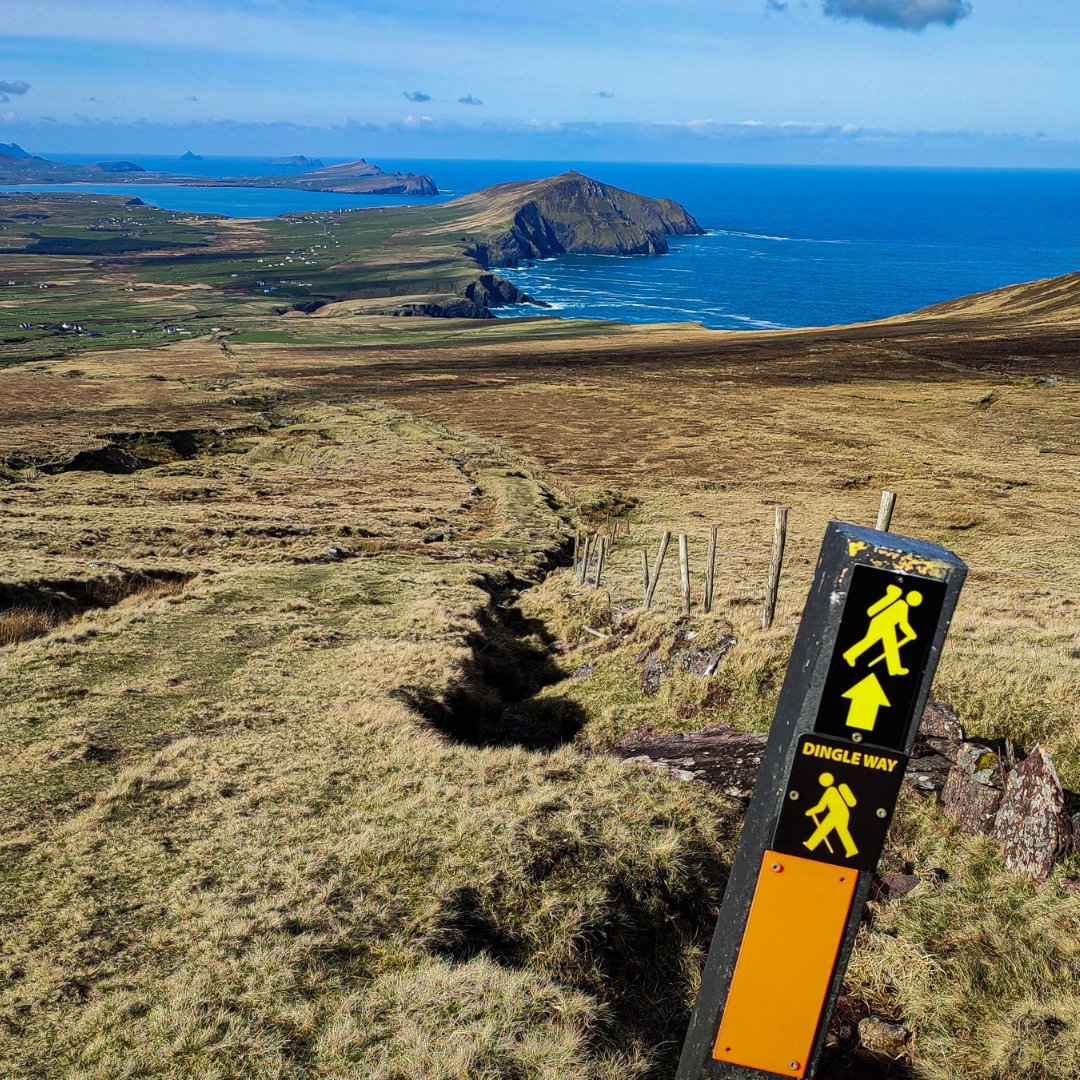
Difficulty
The beauty of walking the Dingle Way is the variety of different landscapes you will experience, invigorating each of your senses. Traversing through foothills and shoulders of rugged Irish mountains, or listening to the Atlantic ocean crash her waves against Slea Head, feeling the golden grains of sand beneath your feet.
Most of the Dingle Way crosses low-lying land that looks up at mountains rather than down from them. Although there are some short steep ascents during the trail, there are almost no significant steep climbs. The exception to this is to choose traversing Masatiompan, between Cuas and Cloghane, where the trail ascends to a height of 650m (2,133ft) above sea level. In total, the aggregate ascent over the course of the route is approximately 2,900m (9,514ft).
The type of terrain experienced along the Dingle Way consists mainly of quiet tarmac roads, mountain, field, and cliff paths with the extra bonus of 20km (12.4 miles) of beach walking. Small roads, or ‘boreens’, make up a significant amount of the trail which help provide you with a quick walking pace. As mentioned above, a large part of the Dingle Way is made up of beaches. Some of these beaches provide you with an opportunity to take some weight off your weary feet by taking a refreshing swim. The remainder of the walk generally goes through open farmland and mountainous moorland.

Sights & Attractions
Blennerville Windmill
Standing just outside of Tralee on the Dingle Way, Blennerville Windmill is the largest working windmill in Ireland. Tours are available for the windmill where visitors are shown each step of the flour-making process. There is also an exhibition of which shows the history of the area. During famine times, Blennerville was an important port of emigration for the people of Kerry.
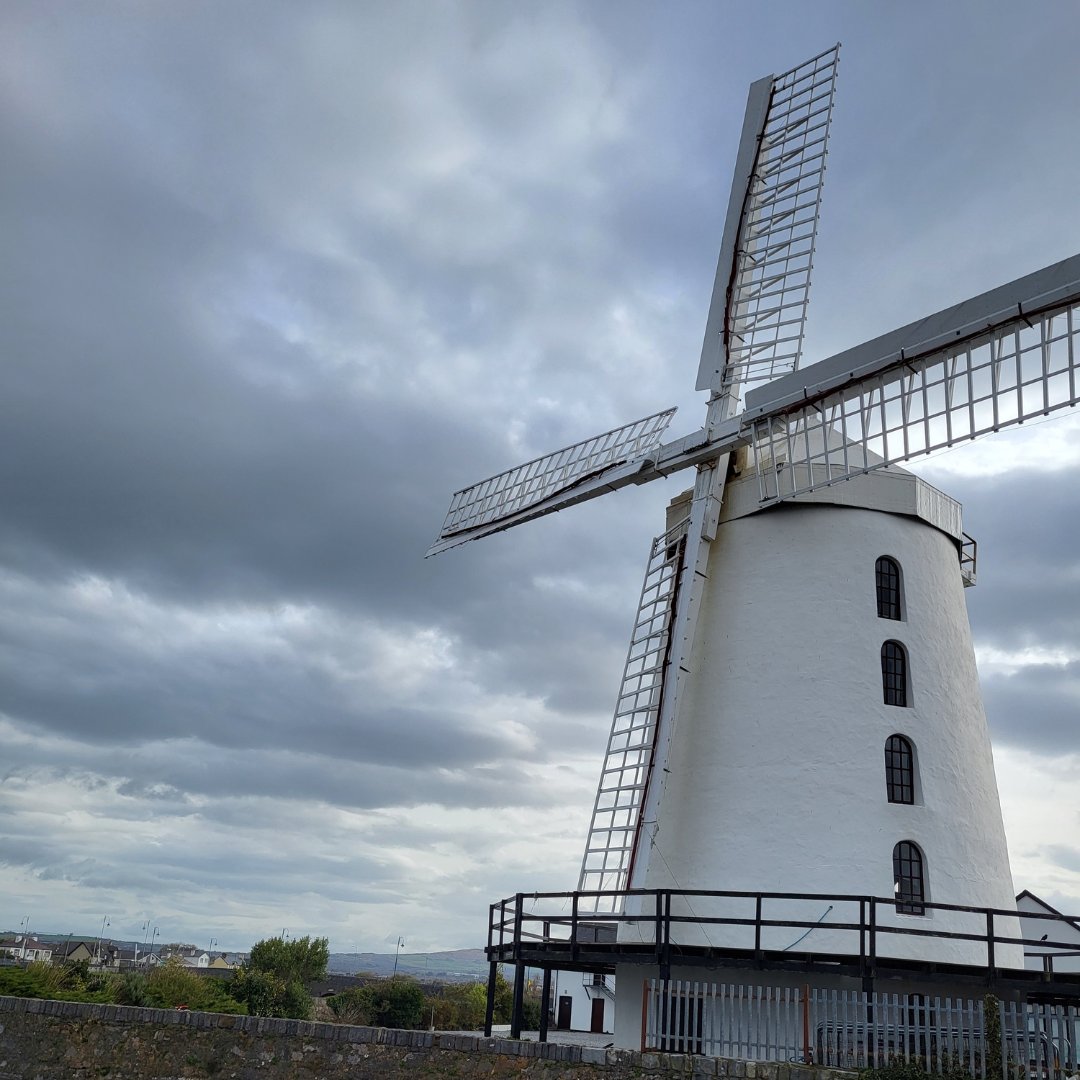
South Pole Inn
The South Pole Inn is a pub that was opened by Irish explorer, Tom Crean, during the 1920s. For those unfamiliar with Crean, he is considered to be the unsung hero of the Antarctic explorations. He was part of Captain Scott’s team between 1911 and 1913 as they raced Captain Amundson’s team to the South Pole. Scott’s team lost and most of the team perished but Crean survived. He survived a further doomed exhibition before returning home to Annascaul in 1920.

Great Blasket Visitor Centre
The Blasket Islands was once home to many Irish-speaking inhabitants, and was used by many Irish-language writers as a sanctuary to learn and hone their skills. The islands were abandoned in 1954 due to population decline and because it was deemed unsafe as a result of its remoteness. The Great Blasket visitor centre details the lives of the people who used to inhabit it while also displaying local flora and fauna. The centre was updated and refurbished with a new and imaginative multi-media experience detailing the unique oral culture of the Irish speakers on the island. The building looks over the Great Blasket giving you some spectacular views.
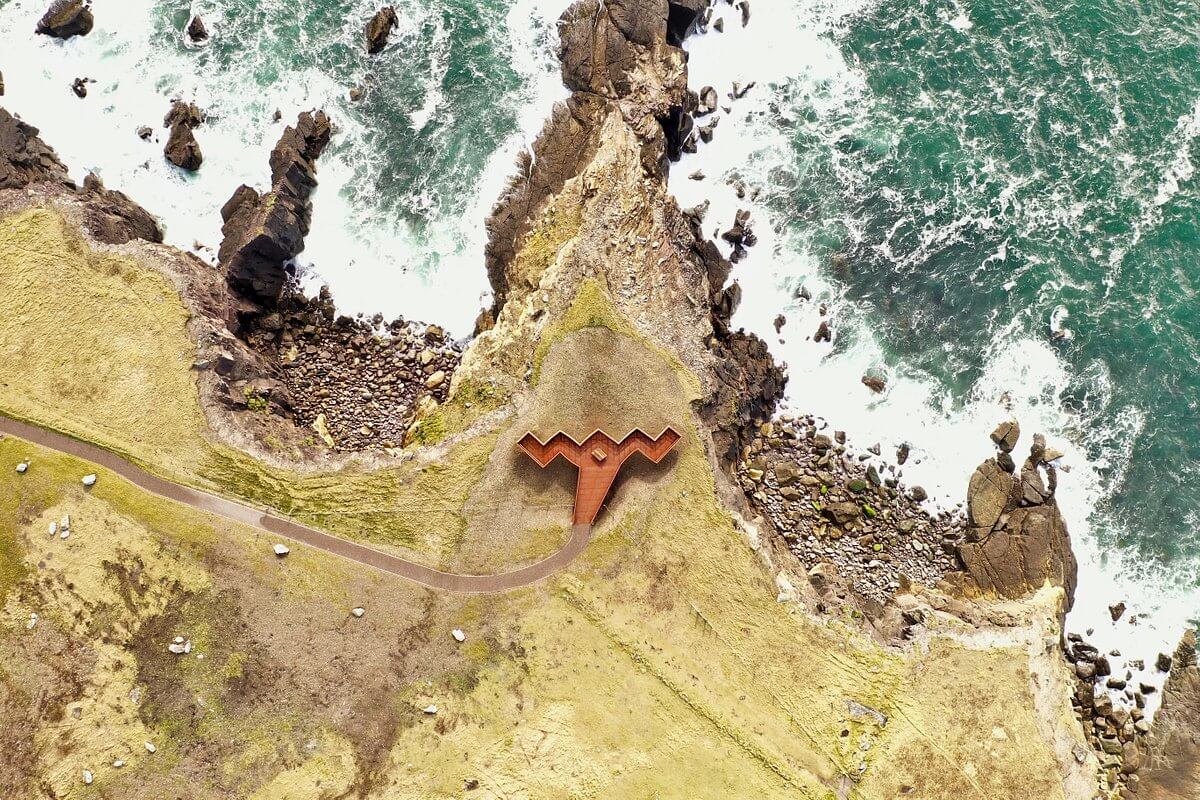
Peig of Great Blasket Island
Anyone who travels in Kerry will tell you about the importance of talk as the natives love to chat and more importantly learn about you! Peig Sayers of the Blasket Islands (the most western part of Europe) famously dictated the tough story of her life to her son in the book “Peig”. It details the struggle of island life and how its unique oral culture sustained itself by visiting each others houses for music and song, recounting tales of myth and legend in Irish while they imbibed Poitín (“poteen” Ireland’s illegal hooch).
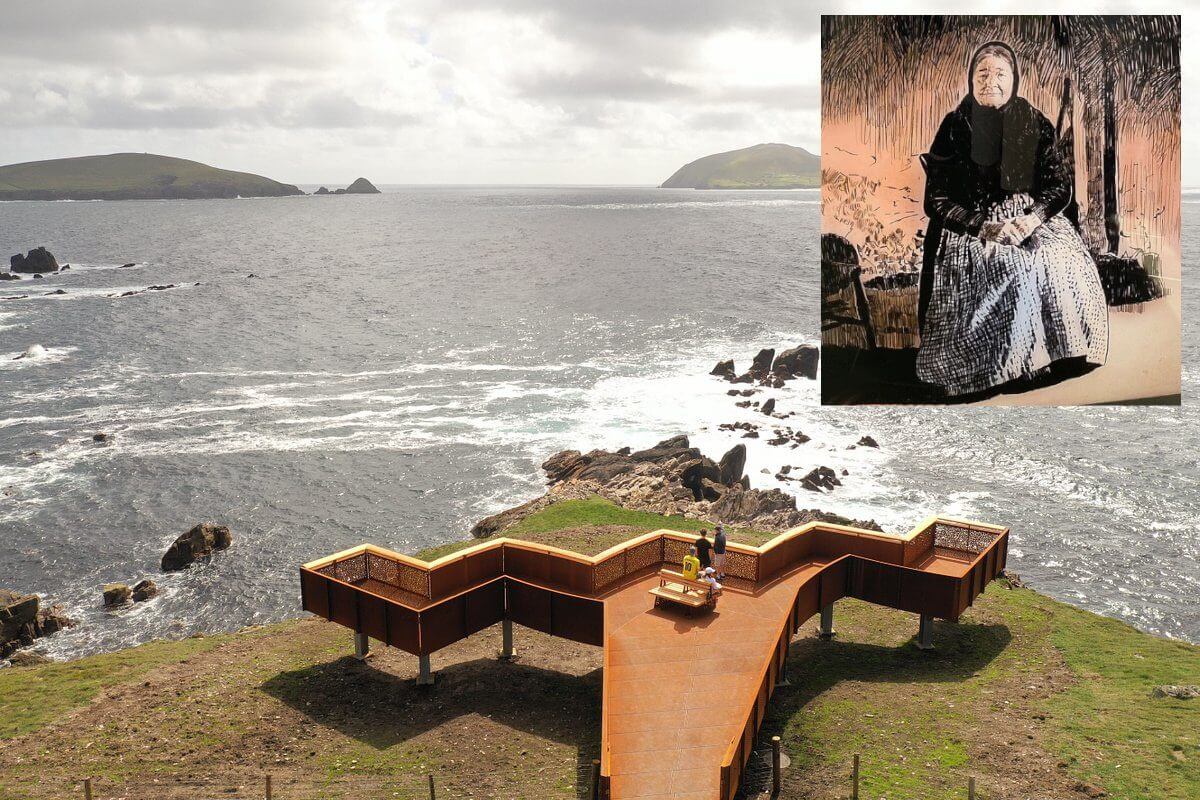
Spectacular Views of the Dingle Peninsula
There is only one significant climb along the Dingle Way on the section between Cuas and Cloghane. The trail brings you over the shoulder of Mount Brandon past the peak of Masatiompan. Despite the ascent, your efforts don’t go unrewarded as you are gifted spectacular views of the Dingle Peninsula and Atlantic Ocean.
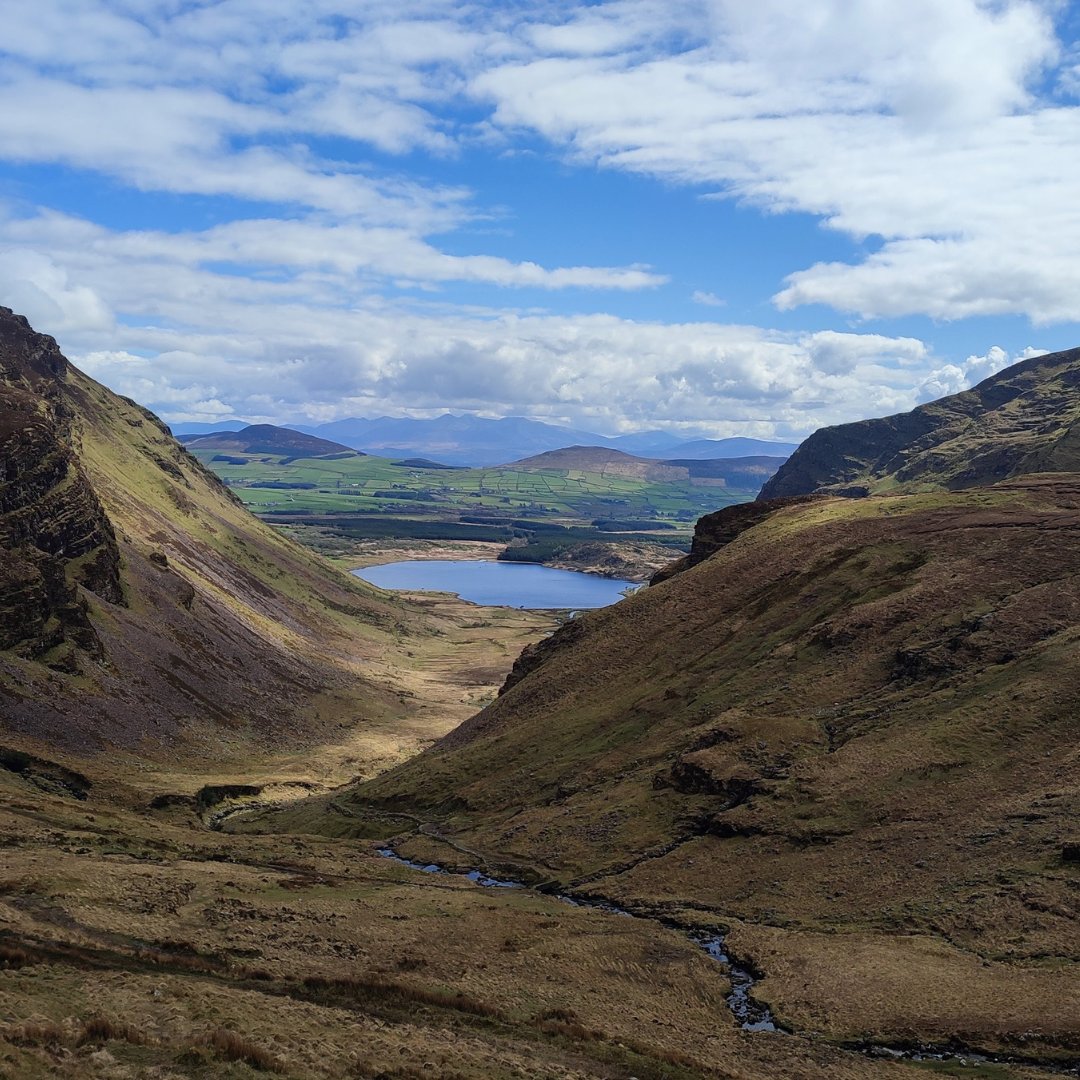
Dingle Town
Dingle Town is the “capital” of the peninsula, the most western town in Europe boasts a busy, beautiful scenic harbour, rows of bright and colourfully painted buildings and an array of traditional Irish pubs to visit. A quaint and creative place it is rich in culture and music. It is also renowned for its colourful buildings. Noteworthy among its traditional Irish pubs is Foxy John’s, a unique establishment known for its “ruthless craic”. It combines a pub, shop and hardware store. It is also famous for its traditional Irish music sessions.
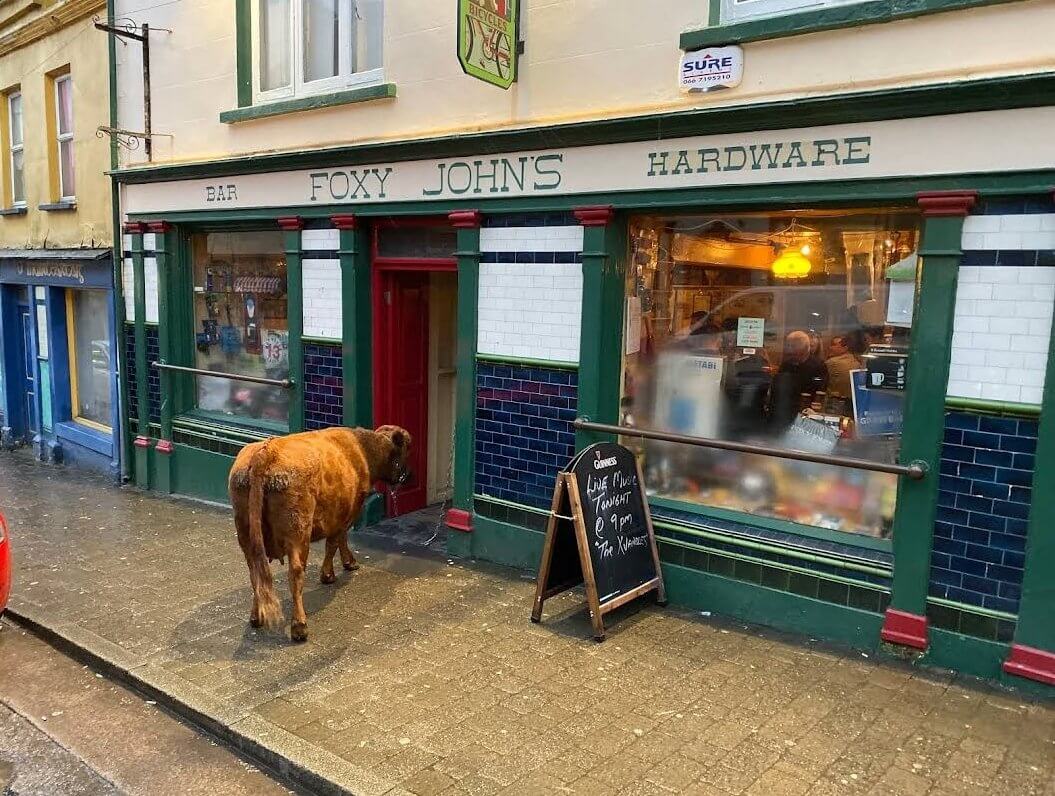
Foxy Johns Bar and Hardware Store, Dingle, Co. Kerry, Ireland
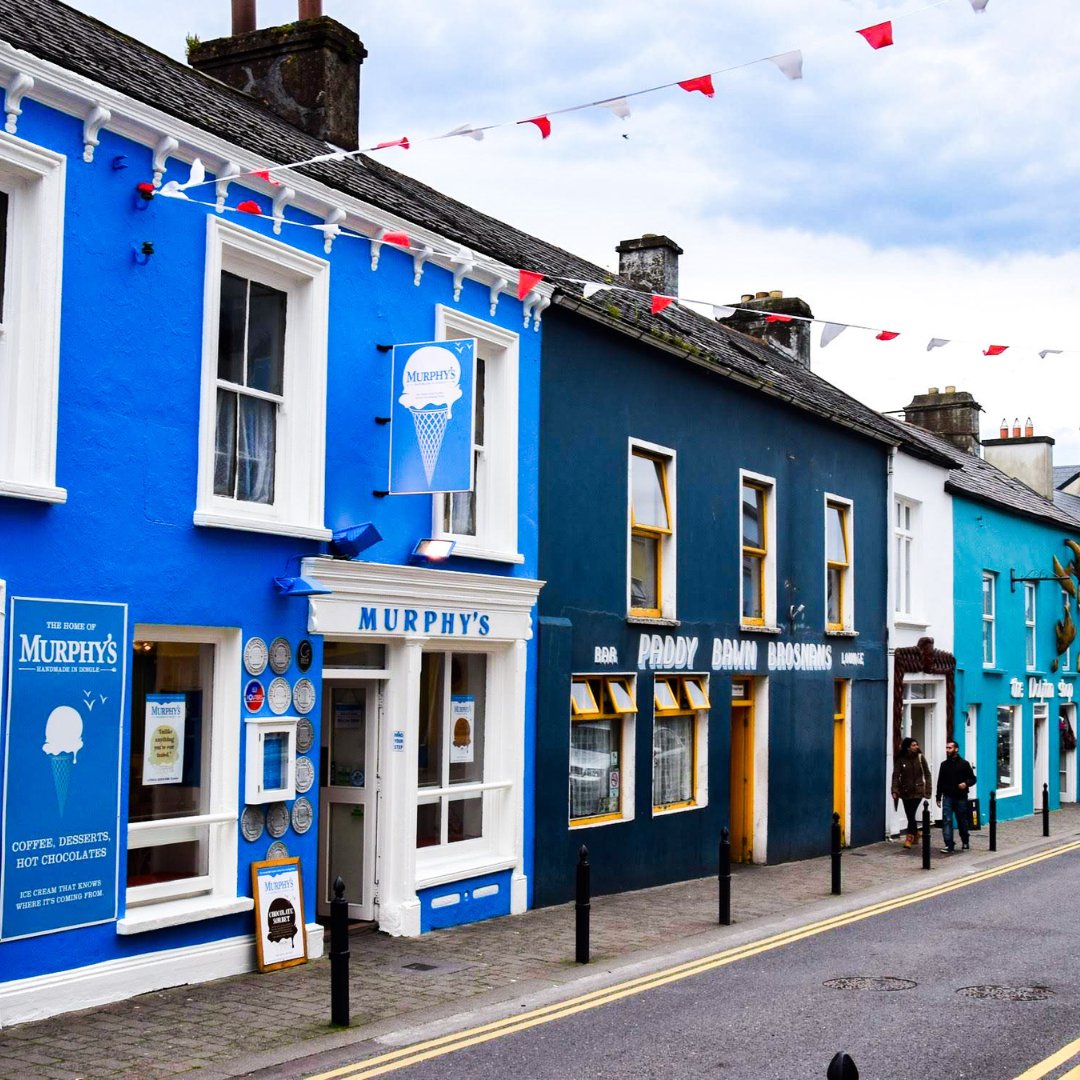
Dunquin Pier
Dunquin Pier is the perfect location for those of you who are in search for that perfect picture or Instagram post! The Dingle Way passes the famous stone pier which has a wonderful winding road and steps as you descend from the heights above. Particularly lucky visitors will be able to witness a local farmer herd his sheep up or down the snakelike path as they import or export their flocks to and from islands off the coast.
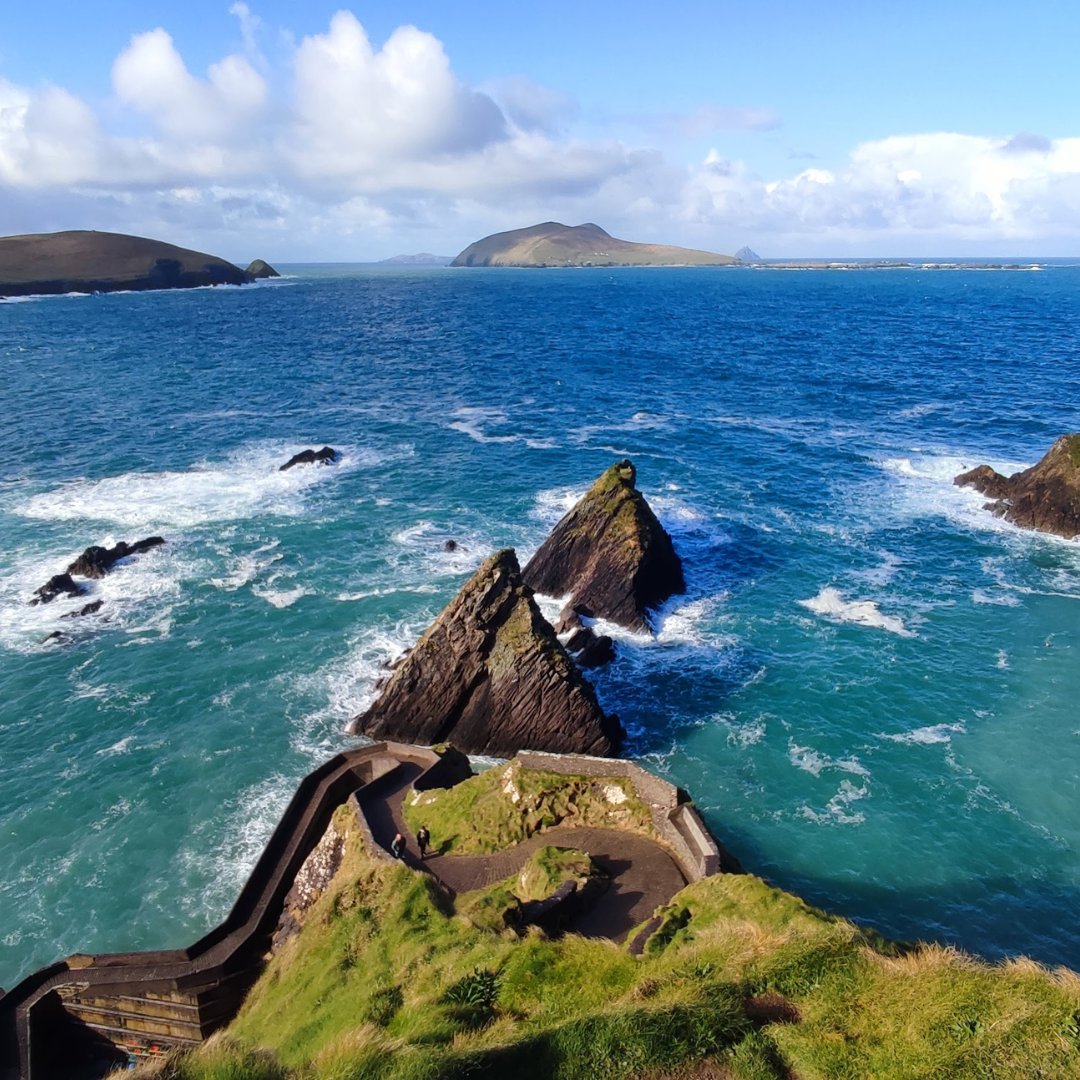
Gallarus Oratory
On a brief detour inland, walkers can find, what is considered to be, the best preserved early Christian church in Ireland. The Gallarus Oratory, and its famed curved peak, was built between the 7th and 8th centuries. The dry stone corbelling technique used in its construction was impressive for its time which resembles something of a miniature, Irish-style pyramid.
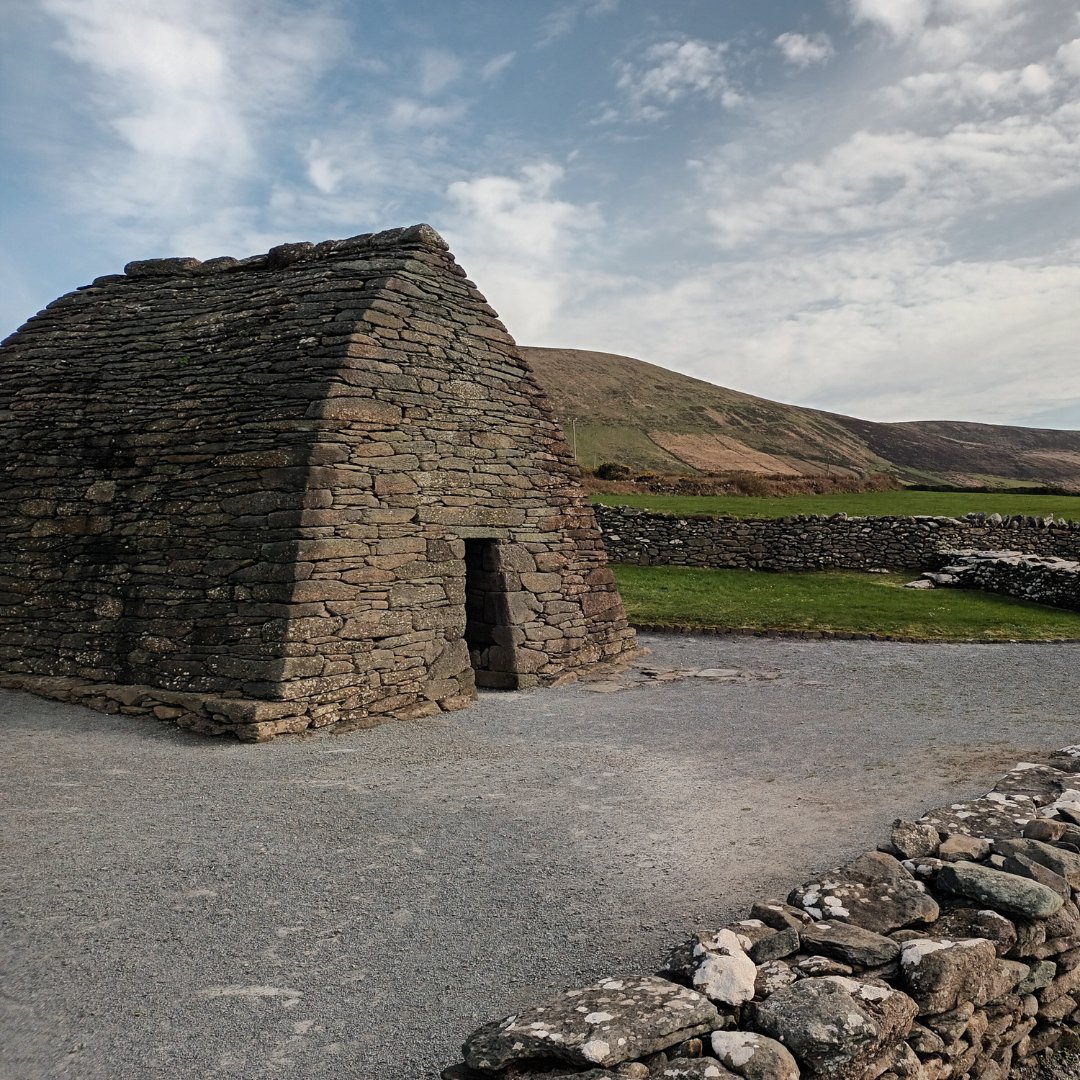
Inch Beach
For those of you who wish to tackle the longest version of the Dingle Way, the southeastern extent of the trail has a unique treat in store. Inch Beach is a well-known Irish beach that expands 5km or 3 miles. It is a perfect place to detour on your journey around the peninsula and walk along its golden sands as the waves wash in right beside you.
Wildlife
Wildlife is plentiful throughout the Dingle Way trail. Walkers are given the opportunity to see a host of different types of animals from red deer, mountain goats, and stoats. There is also a high likelihood you will see an abundance of marine life while walking the trail such as basking sharks, dolphins or an array of sea birds including puffins!

It is of course great to get up close and personal with any of these animals. However, to maintain these experiences as much as possible, it is important that hikers interact as little as possible with the wild animals.
The do’s and don’ts regarding wildlife are, as always, self-explanatory. Feeding is of course out of the question, but also try not to run after animals for photos. Leave the animals alone as much as possible – after all, you are visiting their “home”.
History of the Dingle Way
It could be argued that the Dingle Peninsula is one of the richest areas of archaeological artefacts and preservations in western Europe. On the Dingle Way trail you will see remains of churches that date back to 600AD, Clocháns (corbelled stone huts or beehive huts) that date from the 6th century, and old ringforts that date as far back as 860AD.
The Dingle Way is a National Waymarked Trail by the National Trails Office of the Irish Sports Council while being managed and maintained by both the Dingle Way committee and the Kerry County Council.
Did you know?
In 2016 and 2019, the Blasket Island Ferry was cancelled for an odd reason. On both occasions, motorists attempted to drive down the sharply narrow pedestrian pathway to get to the bottom of Dunquin pier, only for both of their cars to become wedged and stuck on the snakelike walkway. Needless to say, even the sheep were laughing at them!

The People & Local Customs
The people of Dingle are known for their warm and friendly nature. It is customary to greet others with a smile, engage in small talk, and show general friendliness towards both locals and visitors. Hospitality is highly valued, and you may often find locals offering assistance or striking up conversations. Dingle has a rich musical heritage, and traditional Irish music plays a significant role in local customs. Many pubs in Dingle host live music sessions, and it is customary to join in or enjoy the lively atmosphere. The local residents take pride in their cultural traditions, including music, dance, and storytelling.
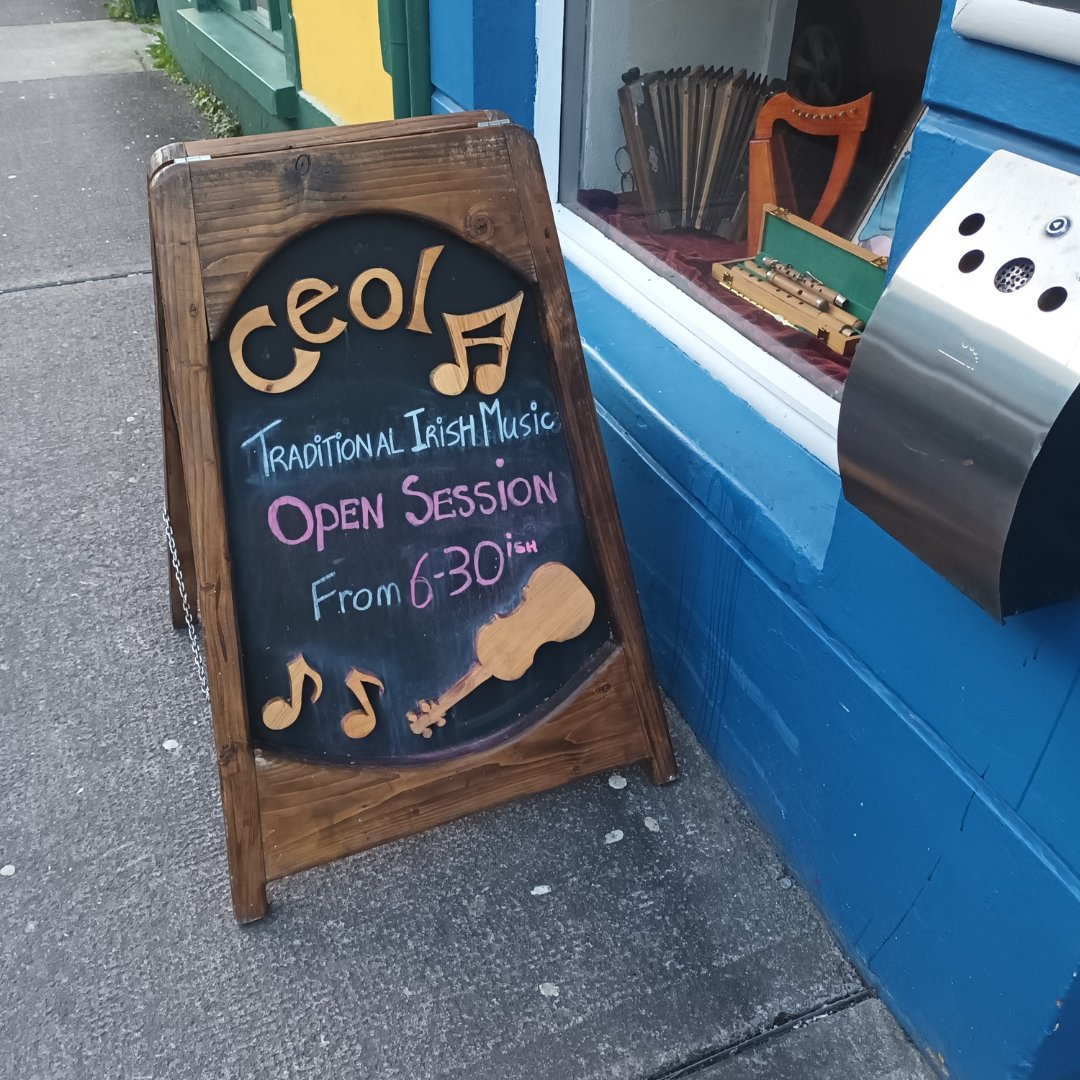
The Irish language, also known as Irish Gaelic or simply Irish, holds a special place in Dingle. Signs, street names, and public announcements are often bilingual in English and Irish. While English is widely spoken, showing respect for the Irish language and culture is appreciated. Learning a few basic Irish phrases like “Dia duit” (Hello) or “Go raibh maith agat” (Thank you) can be a pleasant gesture.
Tipping in Ireland is a relatively new phenomenon due to the influx of tourists. However, it is important to note that tipping isn’t socially mandatory and ultimately depends on your own personal preference and of course, in certain environments. When dining in a restaurant, it is normal to leave a 10% tip, whereas anything above 10% is only really given if the service was found to be outstanding. Tipping is not expected in any pub although if you receive table service, a tip is graciously accepted. You are also not expected to tip B&B’s, guesthouses or hotels unless you feel the need to.
Dingle’s Festival Fame
Dingle continues to be recognised as one of Europe’s leading towns for festivals, celebrated for its lively and diverse cultural scene all year round. The European Cultural Tourism Network (ETCN) and the European Travel Commission have spotlighted the Dingle Peninsula, naming it as a finalist in the prestigious Destination of Sustainable Cultural Tourism category.
From the award-winning Féile Na Bealtaine arts festival in May to the thrilling Dingle Races in August, the Dingle Food Festival in October and the iconic Other Voices in December, the towns calendar is packed with exciting events every year. In addition to these major festival attractions, visitors can also discover smaller village gatherings such as regattas, walks and traditional music sessions. Whether your passionate about food, arts, fitness or simply looking for an enjoyable time, Dingle promises something for everyone.
Dingle Way Pop Culture
Films and TV
Due to its diverse landscapes that are each magnificent, inspirational and spiritual, it is no wonder why Dingle has been chosen as a popular film location over the years. Here are just a few notable movies and tv shows that you might recognise on the trail:

Ryan’s Daughter (1970)
This Oscar-winning classic offers a powerful depiction of Ireland during 1916 which is greatly complimented by the rugged coastline and the barren land around the Dingle Peninsula. The opening scene of the movie is filmed on Inch Beach showing the west coast of Ireland in all of its beauty and glory.
Far and Away (1992)
This epic romantic drama, starring Tom Cruise and Nicole Kidman, used the Dingle Peninsula for its Irish coastal scenes. Cruise and Kidman play two Irish immigrants seeking their fortune in America around 1890. The movie soundtrack also features music from Irish artists, The Chieftains and Enya.
Star Wars: The Force Awakens and The Last Jedi (2014, 2017)
Any Star Wars fans out there will know that the makers of this film franchise used areas around Kerry to film two of its movies. The iconic Skellig Islands and Ballyferriter were used for the Force Awakens while for the Last Jedi, Skellig Michael was reused while shots of Dingle Peninsula were also chosen locations to film.
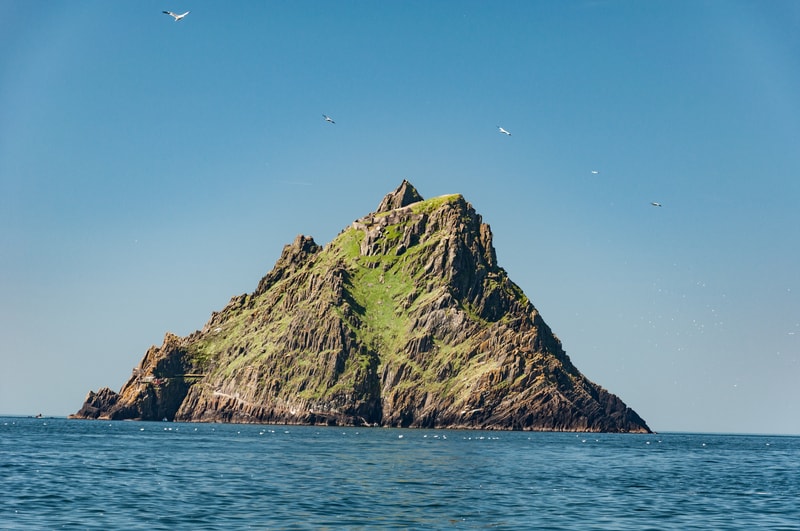
It’s Always Sunny in Philadelphia (2021)
An American sitcom that follows four friends that run an Irish bar in Philadelphia. In season 15, there are episodes called “The Gang Goes To Ireland”, where you will see many Dingle Way sights and attractions such as Blennerville Windmill, Ballyferriter, Annascaul, Dingle Town and Slea Head.
Top Gear (2016)
The very popular car enthusiast TV show, Top Gear, visited Kerry for an episode in 2016. In the epsiode, Matt Le Blanc drives a Rolls Royce Dawn along the famous Ring of Kerry coastal drive and also around the Dingle Peninsula.
Books
An Old Woman’s Reflections: The Life of a Blasket Island Storyteller by Peig Sayers (1936)
Sayers, an Irish speaker, was born in 1873 in Dunquin and married a man from The Great Blasket before becoming one of the Blaskets greatest authors. In An Old Woman’s Reflections, Sayers archives folktales and stories local to the Great Blasket and Dingle Peninsula.
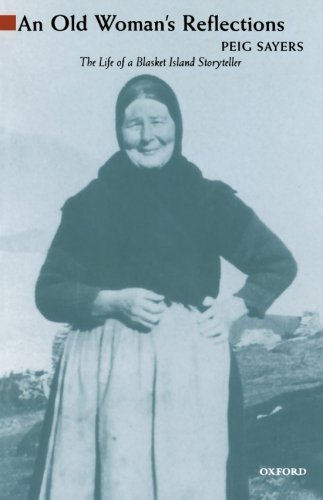
The Islandman by Tomás O’Crohan (1934)
Another Blasket islander, O’Crohan is another well known author from the area. In The Islandman, he accounts the life of a simple fisherman, fishing off the Dingle Peninsula while reminiscing on his childhood learning the traditions of the Great Blasket.
Food and Drink
Below are just some of the food and drink unique to the country of Ireland and something to consider while hiking the Dingle Way:
Irish Stew
A typical Irish dinner if there ever was one. A classic Irish stew contains beef or lamb with vegetables such as potatoes, onions and carrots. This is a perfect, nutritious dish for those that hike as it will fuel you throughout the day and also keep you warm. Don’t be surprised if you see a beef stew made with Guinness!

Full Irish Breakfast
A full-Irish breakfast is typically made up of sausages, bacon, black and white pudding, eggs, baked beans, mushrooms, grilled tomatoes and bread. Irish soda bread is used mostly (see below) and it is typically accompanied by lots of tea or coffee. If you are in a hurry, go to a local shop and get a breakfast roll – whereas many of the above ingredients are added into a fresh baguette. You really have not lived if you haven’t tried one of these!
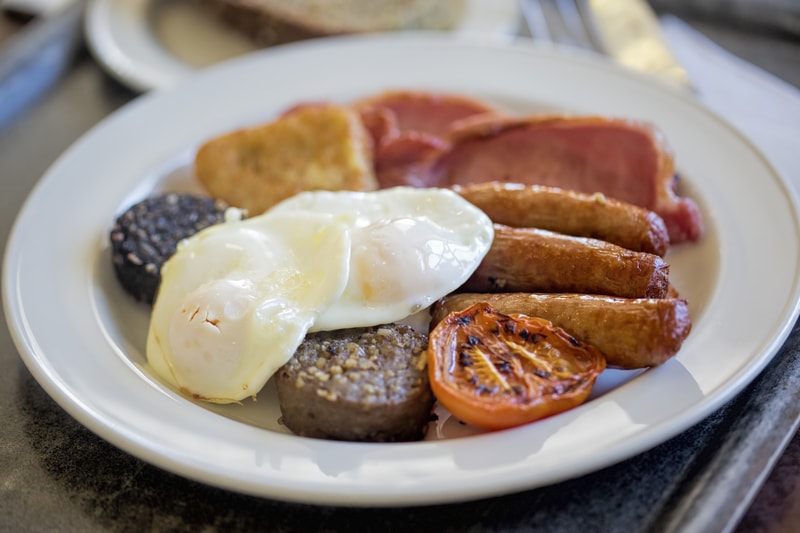
Black and White Pudding
Yes, we knew some of you might be wondering what pudding refers to… it is popular throughout Irish cuisine. Pudding is basically sausage meat blended with oats or barley. There is a significant difference with black and white pudding as black pudding contains blood whereas white pudding doesn’t.
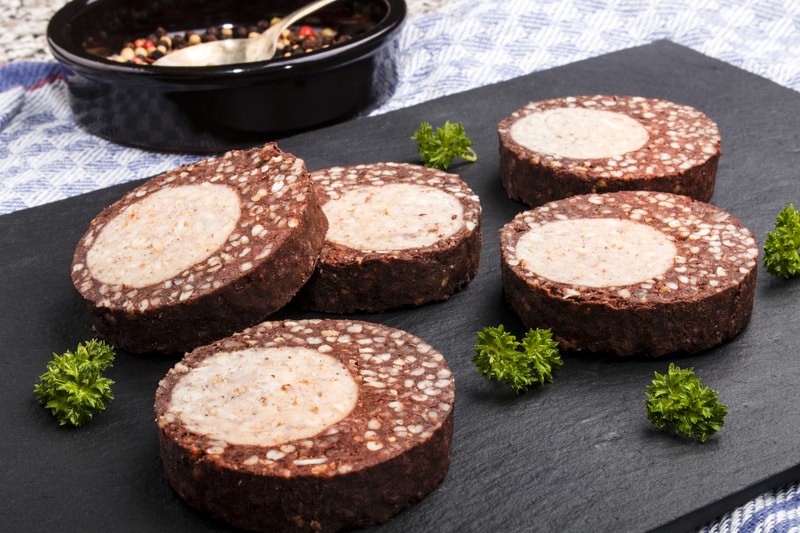
Seafood
Ireland is renowned for its superb and fresh quality seafood. From fresh fish to shellfish, Ireland is a big producer and exporter of seafood. Examples of this fabulous seafood includes salmon, monkfish, pollock, hake, oysters, prawns and mussels. For all of you fish and chips lovers out there, you have not lived until you have tried an Irish fish and chips from a local ‘chipper’.
Seafood Chowder
Seafood Chowder is a hearty soup made with seafood, vegetables and cream and is a popular meal throughout the pubs and restaurants of Ireland. It usually contains fish such as salmon, white fish, and prawns mixed with onions, potatoes, swede and cream. It is typically served with homemade brown bread and is another dish that will keep you full throughout the day!
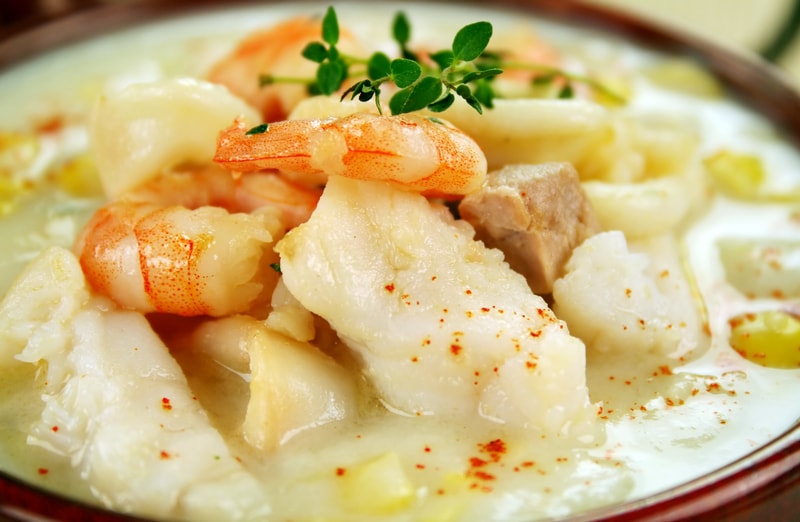
Bacon and Cabbage
This dish of sliced back bacon boiled together with cabbage and served with potatoes (some form of white sauces optional) has long been a traditional dish of Ireland. This is because each of the ingredients were readily available as they grew their own cabbage and reared their own pigs. You’re trip to Ireland is incomplete until you have tried this typical Irish dish!

Shepherd’s Pie
Possibly Ireland’s most beloved ‘comfort’ dishes, Shepherd’s Pie is made with a layer of ground beef or lamb and veggies, and is topped with creamy mashed potatoes before being baked to perfection. The dish actually originated in Scotland where crust was used in place of potatoes. However, once it arrived to Ireland, potatoes were quickly opted for instead, and the dish has become a household favourite throughout the country.
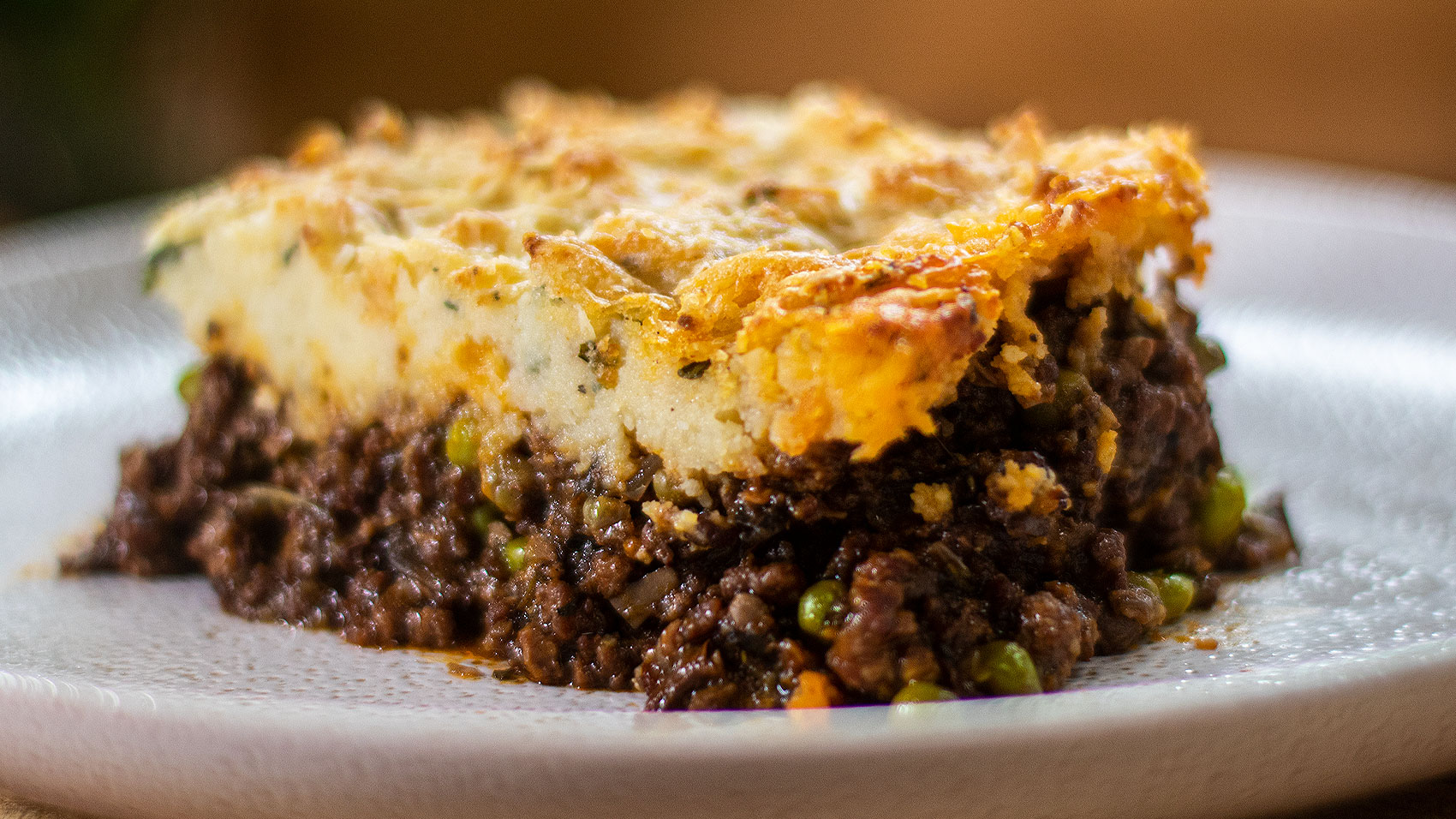
Guinness
Did you even go to Ireland if you didn’t have a pint of creamy Guinness? This dark stout is made from barley, hops, roast malt extract and water. Some of the barley used is roasted to give Guinness its dark colour and unique lactic acid flavour. Brewed at St. James Gate Brewery in Dublin since the late 18th century, this Irish pint is exported across the world, making approximately $2 billion annually. Any Guinness connoisseurs will tell you, you have not had a Guinness unless you have tasted one in Ireland!
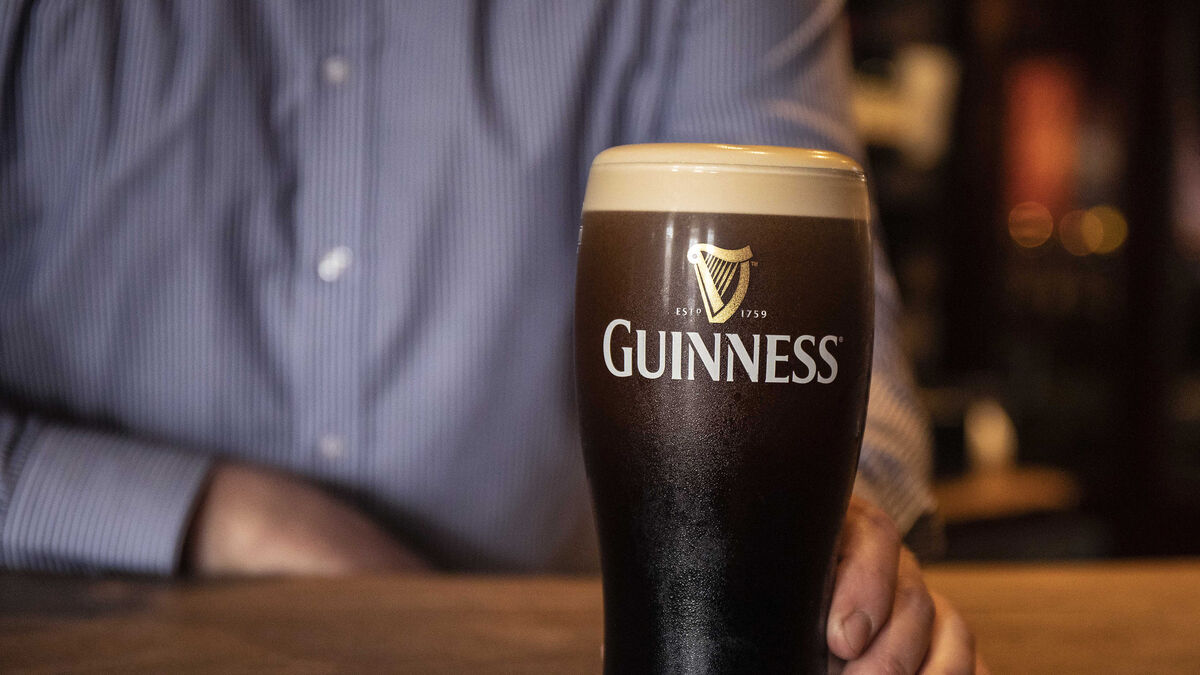
Irish Coffee
No, we aren’t talking about Irish roasted coffee beans here. This is a caffeinated alcoholic drink that consists of whiskey, hot coffee, brown sugar topped with cream. There are plenty rumours about how this hot beverage came to fruition but the most commonly believed story is that a head chef in the restaurant of the Foynes Airbase added whiskey to the coffee of some tired passengers who were awaiting a storm to pass. The rest is history!

Is the Dingle Way Vegan Friendly?
The vegan diet has become more and more popular throughout Europe in recent years, and you will find that there are plenty of vegan options available in most eateries. Each of the accommodation we work with at Hillwalk Tours have given us their guarantee that vegan breakfasts will be catered for once they have been informed. That being said, some of the more rural locations of the trail may have limited options so we advise bringing certain items such as plant-based milk, nut butters or protein powders if you so choose.
In addition, the following apps show restaurants which offer vegetarian and/or vegan opions:
Nearby Trails
There are various other Irish trails available to you once you have completed the Dingle Way. Here are the other Hillwalk Tours Irish hiking tours we offer:
- Kerry Way
- Kerry Camino
- Connemara & West of Ireland
- Sheep’s Head Way
- Beara Way
- Burren Way
- Wicklow Mountains
- St Kevin’s Way & Glendalough
- Antrim Glens & Coastline
Dingle Way Tips and FAQs
Probably one of the most common questions asked when walking the Dingle Way or any trail for that matter is – what will I pack?
Once you have fully booked your Hillwalk Tours hiking holiday, you will receive a detailed ‘recommended equipment’ list inside your Walking Pack. For those who are still unsure of what to bring, here are some of the things we advise you bring with you along the Dingle Way:
– Waterproof Cothing
– Fleece and other warm clothing
– Base Layer
– Light, comfortable Trousers
– Wicking Socks
– Suitable Hiking Boots
– Backpack/Rucksack
– Hat and Gloves
– First Aid Kit and Foil Blanket
– Whistle and Torch
– Insect Repellent
– Mobile Phone
– Plug Adapter/Converter
For more on what to pack – check out these packing musts.
Unfortunately, dogs are not welcome on any of the walking trails in Kerry or the surrounding mountains due to the amount of farm animals such as cattle and sheep.
As most of the accommodation we work with in this area don’t accept pets of any kind, it is not possible to bring any pets, such as your dog, on a Hillwalk Tours hiking holiday.
As the trail is one of Ireland’s most popular, you will rarely be alone while walking it. You will always meet people along the way with the only exception being during the depths of winter.
As a result of this, the Dingle Way is deemed safe for solo hikers.
Furthermore, conditions at certain points along the trail can be slippery, muddy and wet so general precautions still apply.
If you experience any difficulty or emergency of any kind, it is advised that you phone the relative emergency services on 999 or 112. It is also important to note that mobile phones in Ireland can call this number with or without mobile/cell coverage.
For those who have fully booked their Hillwalk Tours hiking holiday on the Dingle Way, we provide 24/7 on-call support to all of our customers and you will receive a detailed description on how to remain safe during the course of your hike.
Yes, solo hikers are more than welcome to complete the Dingle Way and the trail proves to be quite popular for solo hikers. However, due to the limited availability of single rooms along the trail, it is important to note that booking early is recommended, in addition to a single supplement charge also being applicable.
We believe that the beauty of the Irish countryside should be enjoyed by everyone. With this in mind, we designed our hiking tours to cater for practically all levels of fitness. Our range of ‘Gentle’, ‘Moderate’ and ‘Challenging’ hikes in all regions allows you to decide how far you wish to walk each day and the pace you set. So, whether you are a novice walker or an experienced hiker, we always have a tour to suit you.
Cycling is allowed along the Dingle Way and is quite a popular way to take in the breathtaking scenery the trail has to offer. However, it is important to note that the Dingle Way was predominantly deisgned as a long-distance walking route so you may come across terrain, underpasses and gates at several parts of the trail. It might be best to leave bike at home this time!
Generally, our tours take place between the months of March to October to hopefully allow for good, dry weather and longer days of daylight while you carry out your tour. This will hopefully ensure that you enjoy your hiking experience with us to the fullest. You can also check out the individual tour page for the Dingle Way trail on our website.
Our 7-Day tours include 6 nights of accommodation – specifically the first 6 nights on your hiking tour. Your tour finishes on the seventh day when you check out of your last accommodation.
To ensure you’re fully equipped and informed throughout your trail we provide a very informative ‘Walking Pack that you take with you on your trail. This pack has every detail you will need to successfully finish your trail without any disruption. We advise that you carefully look through this pack before embarking on your journey so that you have some sort of idea of where you’re going and what you will entail throughout the journey. Included in this pack is as follows;
– Route notes (prepared by a member the Hillwalk Tours team who has walked every step of your tour)
– Detailed hiking map(s)
– Waterproof map-case
– A sneak-peak at where you will be staying
– Our tips on the most interesting attractions to visit along the trail
– A look at fascinating local history
– A guide to the best places to eat and drink
– Mountain safety information, emergency contact details & the country code
Dingle Way Image Gallery
Hillwalk Tours
About Us
Hillwalk Tours is an award-winning walking tour operator which specialise in self-guided walking holidays in Ireland, Scotland, England, Wales and along the Camino de Santiago in Spain. Our goal is to create happy experiences for all of our customers, suppliers & staff.
Fill out the form below with any questions you may have and we will get back to you promptly.
Follow us on our social media platforms
Customer Reviews
Leave No Trace
We like to walk in nature and since you are reading this – we believe you do too! It is important to ensure that our impact on the environment is limited so that hikers can enjoy the same view after us. The rule applies: when you leave, make sure that nature looks the same as when you arrived or simply put “leave no trace.” As more and more people take to the great outdoors, our collective mark on the environment increases.
What does this mean in reality? Of course, do not leave any rubbish or waste behind. Do not collect stones, flowers, or other “souvenirs”. Don’t carve your name on a tree or break branches… I think you get the drift. It is imperative for walkers to play their part in making sure litter, damage to vegetation and all forms of pollution are limited.
Noise can also be a form of pollution. Whoever walks through a forest talking and laughing loudly, for example, ruins the peace and quiet of other walkers, who can no longer hear the birds. The same goes for cell phones that suddenly start ringing. Keep the volume down and respect your surroundings. Ultimately, the point is to ensure that as many people as possible can enjoy walking through nature. So that applies to you, but also to those who tread the path after you.
Hillwalk Tours proudly supports sustainable tourism and loves the countryside as it is – wild, peaceful and clean. We are proud to support the “Leave No Trace” initiative that aims to preserve the natural beauty of each nations countryside where we offer hiking holidays. We try to create happy experiences for our accommodation too, and the restaurants, shops and taxi companies that serve our walkers. These are often small businesses located in isolated areas that have been left behind by urban migration and a lack of investment in rural regions. Their warm hospitality and friendly welcomes epitomise the magic of a Hillwalk Tour and we’re dedicated to helping keep these rural communities alive.
The Benefits of Hiking
In recent years, walking and hiking outdoors has been widely reported to have numerous physical and mental health benefits. The following are examples of some of these benefits:
Improve strength and fitness
- Weight loss
- Muscle gain
- Improve metabolism
- Improve digestion
- Better quality sleep
- Increase in Vitamin D
- Improve discipline
- Sense of achievement
- Living in the present moment
Hiking Equipment List
For a more in-depth list of recommended hiking equipment list, click here.
Make A Booking
Are you ready for your Dingle Way adventure? Get started by simply filling out the booking form below!
 To celebrate our 3 new walking trails in the Algarve in Portugal, book an Algarve walking tour by 11th May & get €50 off!
To celebrate our 3 new walking trails in the Algarve in Portugal, book an Algarve walking tour by 11th May & get €50 off! 































